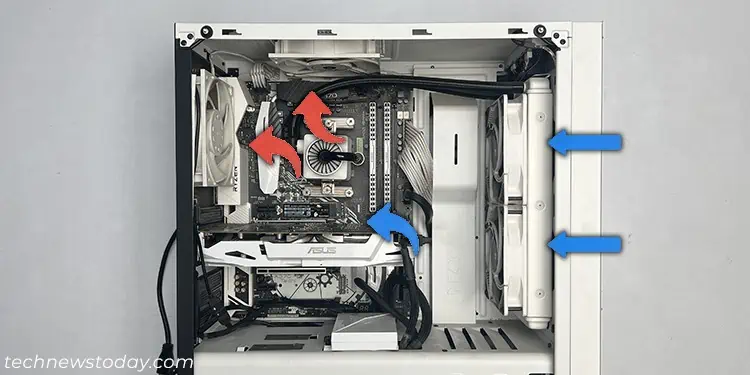It is possible to install an All in One (AIO) Cooler as an intake or exhaust by simply changing thedirection of the radiator fans. While both modes will cool down your CPU, the way they do so is somewhat different.
Generally, using AIO asintake is better for the CPUand using it asexhaust is better for other components like the GPU. However, there’s only a slight difference in the cooling performance since it is not just the radiator fan but the whole airflow inside the case that maintains the temperature.
You actually need to pay more attention to theease of installationas well as theproper placementof the radiator to make your choice.
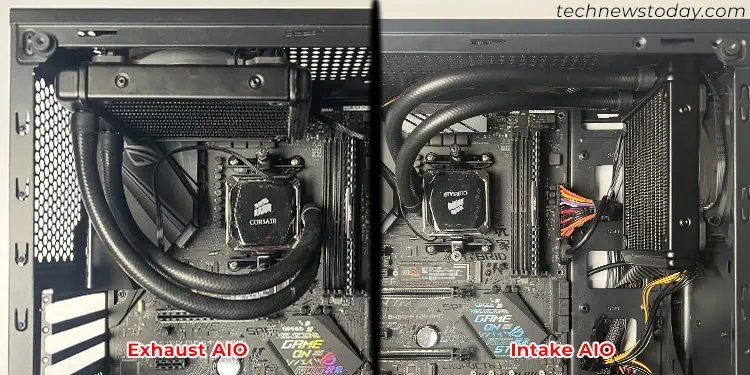
I always utilize the AIO as an intake if I am setting up the radiator on the front and as an exhaust when I place the radiator on the top. I have used many PCs with both intake and exhaust AIO coolers this way, and I found little difference in the performance.
Most AIOs fitted better in one configuration over the other in my PC cases, so I would always choose the better fit for my setup.
Factors that Affect AIO Configuration
Which AIO configuration is better for your setup depends on several factors. You need to pay attention to the ideal placement, installation difficulty, and case airflow, along with the cooling efficiency of these configurations.
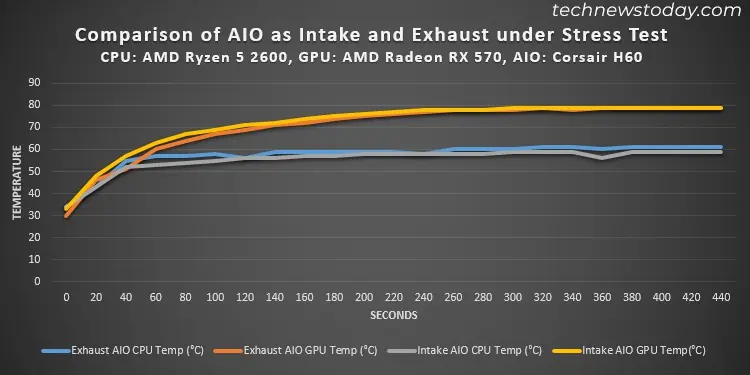
Traditionally, the front/bottom fans on a PC are intake, and the rear/top fans are exhaust. It is the configuration that gives the most cooling efficiency as hot air rises to the top.
So, if you want to set up anAIO radiator as an intake, you need to set it up onthe front or the right-side panel. It’s a very bad idea to install it on the bottom panel as it will cause air bubbles to get trapped at the pump that is at a higher point. This will affect your cooling performance andcreate pump noises.
Similarly, if you want to use anAIO as an exhaust, you need to install its radiator on thetop panel directly over the CPU. you may also utilize the rear panel, but it’s not as common as the IO shield on most motherboards can obstruct the radiator.
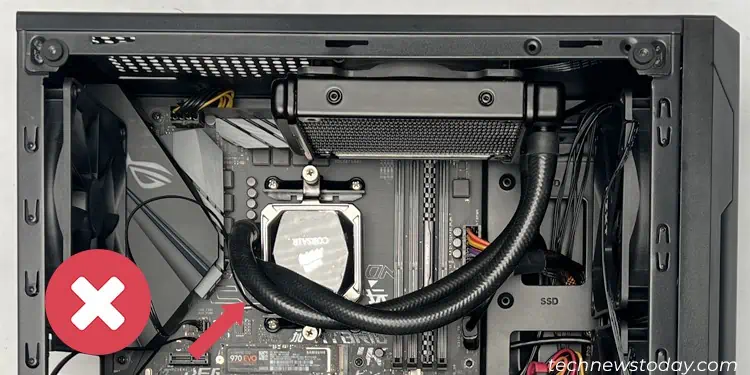
Generally, using anAIO as intakewill helpcool the CPU slightly moreas cooler air passes through the radiator fins. On the other hand, the radiator willintroduce slightly warmer air inside the caseas the air absorbs heat from the coolant in the radiator.
When you are using it asexhaust, the warmer air from inside the case passes through the radiator. So itwon’t be as effective in cooling the liquid and consequently the CPU. But since the warmer air goes outside, itdoes not heat up other internal componentslike the GPU as intake AIO does.
A slight difference inCPU temperaturedoes not affect its performance, but the same is not true for a GPU. It’s always better to have it at the lowest possible temperature if you are into gaming or graphics processing for the best performance. So it might be better to set up AIO as an exhaust in such scenarios.
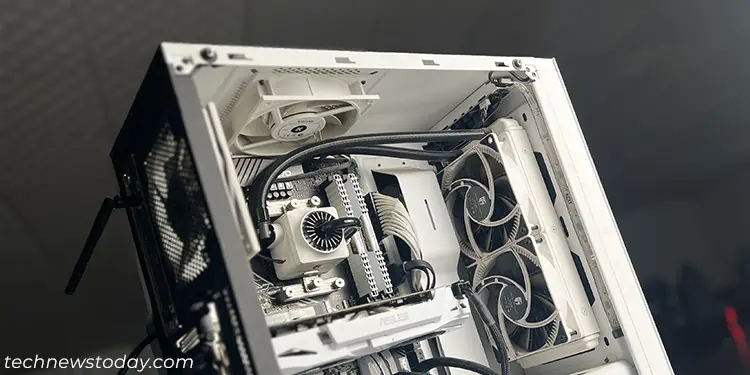
Regardless, if youuse enough case fans, the difference in CPU/GPU temperatures is not that much for both cases (only about 2-5°C). So you actually don’t need to worry too much about the cooling performance.
The components on the motherboard and PC case matter more while setting AIO radiators as intake or exhaust if you have already bought acompatible AIO cooler.
